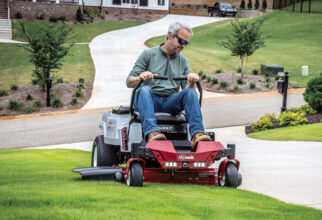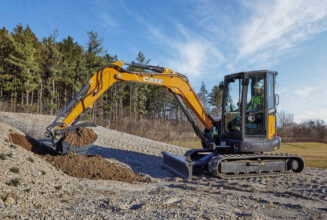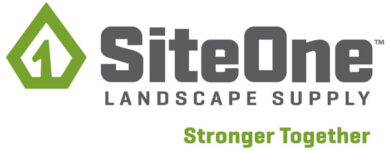Ethanol Education: What you need to know and what you need to tell your customers
By Kris Kiser
To be sure, most consumers do not understand the intricacies of how our fuel choices are set to change in the United States. For example, when consumers were asked about the 15–percent ethanol (E15) gasoline blend by AAA, the biggest U.S. driving organization, 95 percent of consumers were unaware of this fuel choice. Many would argue that many consumers are not even aware that the current fuel on the market contains 10–percent ethanol (E10).
Any attempt to educate consumers about the changing fuels market is daunting. But, the Outdoor Power Equipment Institute (OPEI) — with the support of its membership and dealer network — will be taking on this Herculean task in the second half of 2013. The fact is that higher ethanol fuel blends are entering the marketplace, and they are not meant for outdoor power equipment and small–engine products, such as mowers, chain saws, snow throwers, generators, utility vehicles, or other lawn and landscape equipment. OPE owners and purchasers need to become clear on the correct fuel for which their equipment was designed, built, and warranted — and use only that fuel.
How did we get here?
In an effort to meet federal renewable fuel standards put in motion by the 2007 Renewable Fuel Standard (RFS) program created under the Energy Policy Act (EPAct), higher ethanol blends are being brought on the market.
The reason is that underlying RFS assumptions made in 2007 haven’t held true: Flex–fuel vehicles that use E85 have not expanded rapidly enough; flex–fuel automobile owners are choosing not to use high ethanol content fuel; gasoline demand has not continued to increase, but is in fact falling; and advanced and cellulosic fuels are not commercially available as had been predicted.
While there are efforts underway in the Courts and in Congress by all engine makers and engine product manufacturers to stop the introduction of mid–level ethanol fuels, the OPE industry needs to prepare for one alarming fact: By law, all outdoor power equipment is neither designed nor warranted to run on any fuel containing more than 10–percent ethanol. For outdoor power equipment and other off–road engine equipment, ethanol has proven problematic in levels above 10 percent, and thus is not legal to use.
Blender pumpWhen a small number of retail gas stations in select U.S. states began offering E15 for sale in 2012, as well as the expansion of blender pumps that dispense mid–ethanol blends, the OPE industry grew concerned and knew it had to act fast.
OPEI and the industry are not anti–ethanol; however, the industry recognizes that higher ethanol fuel can damage outdoor power equipment. We want to protect our current and future customers from inadvertently damaging their equipment by using the wrong fuel.
The Environmental Protection Agency (EPA) has stated that E15–and–higher ethanol blends are not legal for use in off–road engine products, and only legal for a subset of automobiles. Yet, the only warning against “mis–fueling” is a small (3–inch by 3–inch) pump label (see below).
EPA’s 3-inch by 3-inch E15 pump label. Given most consumers are unaware of even the current 10–percent ethanol level in their fuel, the odds of using the wrong fuel are heightened.
It’s incumbent upon manufacturers and dealers to help educate OPE owners and purchasers about the fuel choices out in the marketplace and reinforce that they should only use fuel for which their equipment was designed, built, and warranted.
Don’t miss the unveiling of a national ethanol education program
You, the dealer, are an important conduit to educating consumers about the changing fuels marketplace. But, you are not in this alone.
We urge dealers to attend the 2013 Green Industry & Equipment Expo (GIE+EXPO) Oct. 23–25 at Louisville’s Kentucky Exposition Center to be on the front lines of a major live announcement and rollout of an Ethanol Consumer Education Program.
Dealers will be armed with educational materials, resources and multi–media, so that we, as an industry, can help ensure that a consumer’s product will operate properly and safely by putting in the right gas.
In the meantime, here are some tips on how to advise your customers on ethanol and outdoor power equipment:
Read and follow the owner’s manual. The owner’s manual will clearly explain what fuels can be used to ensure a properly functioning product.
Do not put any fuel containing more than 10–percent ethanol in small engines and small–engine equipment.
Check the gas pump to be sure that it is dispensing E10. Some gas pumps at local gas stations may offer both E10 and E15, or have blender pumps that dispense mid–level ethanol fuels for “flex–fuel” automobiles. Ethanol fuel blends greater than 10 percent — such as E15, E30, E50 and above — may be less expensive than regular E10 fuel, but putting E15 into an E10–approved product could cause product failure and void its warranty.
Do not assume that the fuel your customers put in their vehicles can also be dispensed in their gasoline cans. Be sure that the gas can is filled only with E10 fuel.
Kris Kiser is the president and CEO of the Outdoor Power Equipment Institute (OPEI). OPEI is an international trade association representing 96 small-engine, utility vehicle and OPE equipment manufacturers and suppliers worldwide in the utility, forestry, landscape, construction, and lawn and garden industry. OPEI is a recognized Standards Development Organization for the American National Standards Institute (ANSI) and active internationally through the International Standards Organization (ISO) in the development of safety standards. For more information, visit www.OPEI.org.




